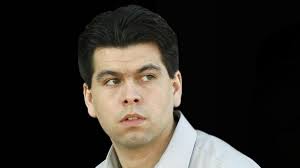Revealing the Tragic Case of the 1996 Rape and Murder of a Dance Student Leading to a Recent Execution

In a startling turn of events, a man has faced the ultimate punishment in the United States for the heinous rape and murder of a young dance student, a crime that remained unsolved for many years. Anthony Sanchez, aged 44, met his fate in the death chamber at the Oklahoma State Penitentiary in McAlester. This execution brought to a close a case that had puzzled authorities until DNA evidence, collected while Sanchez was serving time for burglary, unequivocally pointed to his involvement.
The Heart-Wrenching Story Unfolds
On a fateful day in December 1996, Juli Busken, a 21-year-old dance student who had recently completed her studies at the University of Oklahoma, was abducted from the parking lot of her apartment complex. Her lifeless body was later discovered near a lake on the outskirts of Oklahoma City. The crime scene depicted a harrowing picture – Juli had been bound, raped, and shot in the head. Her promising future as a ballerina, having performed in numerous dance shows during her university days, was brutally cut short. To honor her memory, a scholarship was established in her name at the College of Fine Arts.
A Long Quest for Justice
The path to justice was far from swift. It took years for authorities to connect the dots between Sanchez and the unsolved murder. It wasn’t until he was imprisoned for burglary that DNA evidence from the victim’s clothing was finally matched to him. In 2006, Sanchez was convicted and sentenced to death, a decision that he vehemently contested.
Professing Innocence
Sanchez maintained his innocence throughout the trial and beyond. He repeatedly asserted that the DNA evidence was fabricated and false. In an interview conducted earlier this year while on death row, he declared, “That is not my DNA. I’ve been saying that since day one.” Despite his claims, Sanchez chose not to seek clemency, as he believed that the odds of receiving it were slim, given Governor Kevin Stitt’s reluctance to grant clemency requests.
DNA: A Decisive Piece of Evidence
Despite Sanchez’s steadfast denial of guilt, the DNA evidence against him appeared overwhelming. State attorney general Gentner Drummond emphasized that the odds of randomly selecting an individual with the same genetic profile were astronomically low, at one in 94 trillion. He firmly stated, “There is no conceivable doubt that Anthony Sanchez is a brutal rapist and murderer who is deserving of the state’s harshest punishment.”
Controversy Surrounding the DNA Evidence
Notwithstanding the conviction, controversy continued to swirl around the DNA evidence. A private investigator hired by an anti-death penalty group suggested that the DNA may have been contaminated. However, former Cleveland county district attorney Tim Kuykendall, who was in charge during Sanchez’s trial, dismissed these claims. He emphasized that while the DNA evidence was compelling, there were other factors tying Sanchez to the crime, including ballistic evidence and a shoe print discovered at the crime scene.
A Tragic Chapter Closes
Anthony Sanchez’s execution marks the third in Oklahoma this year and the tenth since the state reinstated the death penalty in 2021, ending a six-year moratorium due to concerns about its execution methods. While the legal proceedings have come to a close, the tragic memory of Juli Busken, a promising young dancer whose life was cruelly cut short, lives on.
The story of Anthony Sanchez and the 1996 rape and murder of Juli Busken serves as a somber reminder of the complexities and controversies surrounding the criminal justice system, particularly in cases where DNA evidence plays a pivotal role.





